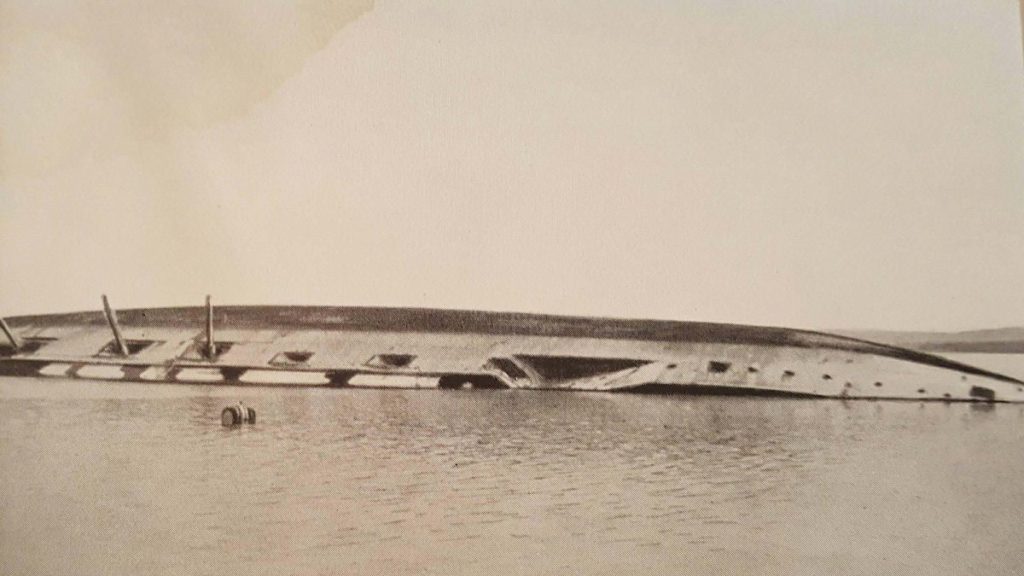A letter written in 1944 by Ibrahim Şevki Efendi, the chief engineer of the Ottoman battleship Mesudiye, has surfaced.
Ismail Sabah, deputy director of the Atatürk and Gallipoli Wars Research Center (AÇASAM) at Çanakkale Onsekiz Mart University (ÇOMÜ), revealed that the letter details the critical hours during the sinking of the Mesudiye, including efforts to rescue the trapped crew. The Mesudiye was sunk by the British submarine B-11 on Dec. 13, 1914, during World War I while serving as a stationary battery in the Gallipoli campaign, resulting in the deaths of 10 officers and 25 soldiers.
During archival research, Sabah discovered the letter written by Ibrahim Şevki Efendi, describing the attack on the ship and the subsequent rescue operation. He noted that the battleship had served the Ottoman Navy for over 40 years but was sent to the Dardanelles because it was deemed obsolete. The ship was anchored near Sarısığlar and repurposed as a stationary battery to protect the minefields and defend the straits.
Sabah highlighted that the crew had opposed using the ship as a stationary battery, citing potential dangers. Despite their concerns, the orders were unchangeable, and the ship was anchored in the designated position. On Dec. 13, 1914, the Mesudiye was struck by two torpedoes fired by the B-11 submarine, causing it to capsize rapidly.
According to Sabah, the submarine had navigated through five minefields to reach its target, showcasing a bold and strategic maneuver given the technological limitations of the time.
The expert also noted that the rescue operation lasted 36 hours. Although the shallow waters allowed the overturned ship’s bottom to remain above water, divers and specialized equipment had to be sent from Istanbul as the necessary oxygen apparatus was unavailable in Çanakkale. The letter describes the harrowing experience of being trapped in the capsized ship and the desperate efforts to signal for help. Eventually, Ibrahim Şevki Efendi and the other trapped crew members were rescued after 36 hours.
In the letter, Ibrahim Şevki Efendi recounts that after being rescued, he was reassigned to the Selanik mine vessel in Istanbul. However, he objected to returning to naval duty due to the trauma he had endured. His objections were dismissed with remarks highlighting his experience, but he eventually secured a transfer to the army, where he served until retirement.
Sabah also explained that in 1943, a radio program on Ankara Radio narrated the story of the Mesudiye. Inspired by the broadcast, Ibrahim Şevki Efendi wrote his letter in Ottoman Turkish on Dec. 8, 1944, detailing the ship’s sinking, the crew’s entrapment and the rescue operation. He sent it to Feridun Fazıl Tülbentçi, providing crucial insights into the events of that day.
Sabah particularly emphasized the significance of such archival materials, which continue to shed light on the Gallipoli campaign and its remarkable historical details.


